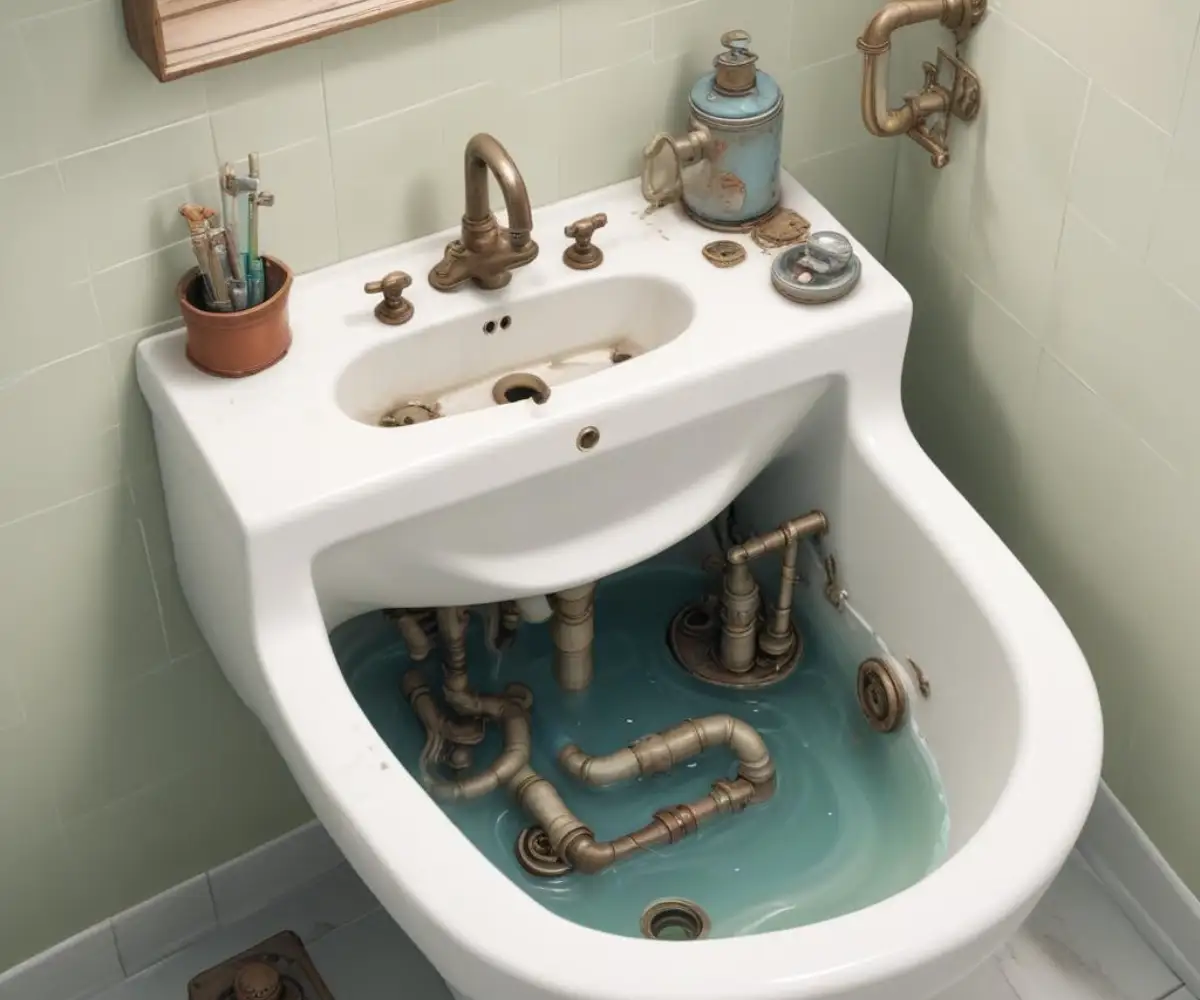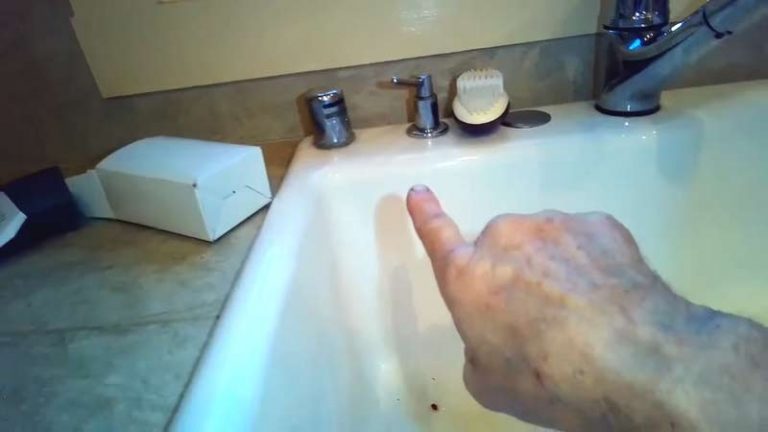Sink Won’t Drain After Cleaning P-Trap? Here’s the Fix!
There are few home maintenance frustrations quite like a stubborn, unmoving sink clog. You did the dirty work: you placed a bucket, unscrewed the nuts, and cleaned out the gunk from the P-trap. But after reassembling everything, you’re met with the same disappointing sight—a basin full of stagnant, dirty water. If your sink won’t drain after cleaning the P-trap, don’t throw in the towel just yet. This common scenario simply means the problem isn’t where you looked; it’s hiding deeper within your plumbing system.
You’ve already tackled the most common culprit, which shows you’re on the right track. The P-trap’s job is to catch larger debris and prevent sewer gases from entering your home. When that’s clear and the sink is still blocked, it tells us the obstruction is further down the line. In this guide, we will explore the hidden causes of these deeper clogs and provide a step-by-step approach to get your water flowing freely once again.
You'll Learn About
Why Your Sink Is Still Clogged (The P-Trap Was Just the Beginning)
Think of your home’s drainage system as a tree. The P-trap is just the very beginning of a small branch. That branch, called a branch drain line, runs from your sink through the wall and connects to a larger, vertical pipe known as a drain stack. This stack eventually connects to your main sewer line at the bottom of your house. A clog can form at any point along this path.
The frustration you’re feeling is common because the P-trap is often the only part of the system that’s easy to see and access. When cleaning it doesn’t work, it’s easy to feel stuck. But the real problem is almost always in one of two places: the drain line inside the wall or a blocked plumbing vent on your roof.
Common Culprits Beyond the P-Trap
Before you can fix the problem, you need to diagnose the cause. A sink that refuses to drain even with a clear P-trap is typically pointing to a more significant issue that requires a different set of tools and techniques.
A Deep Clog in the Branch Drain Pipe. This is the most likely reason for your persistent clog. Over years of use, things like grease, soap scum, hair, and food particles wash past the P-trap and begin to accumulate on the walls of the horizontal drainpipe inside your wall. Eventually, this buildup narrows the pipe until it becomes completely blocked. These clogs are often dense and stubborn, composed of layers of grime that have solidified over time.
A Blocked Plumbing Vent. This is a less obvious but incredibly common cause of drainage problems. Every home’s plumbing system has vents—pipes that typically extend through the roof to the open air. These vents have a critical job: they allow air to enter the drainpipes as water flows out. Without this airflow, a vacuum is created, which slows or completely stops the water from draining, much like how liquid pours slowly from a bottle if you don’t let air in. Vents can become blocked by leaves, bird nests, or other debris, leading to symptoms like gurgling drains, sewer smells in your home, and, of course, a sink that won’t drain. If multiple fixtures in your home are draining slowly, a blocked vent is a very likely suspect.

Step-by-Step Guide to Fixing the Deeper Clog
Now that you understand the potential causes, it’s time to take action. Before starting, make sure you have a bucket, some old towels, and a pair of gloves. These methods involve opening up the drain line, so it’s best to be prepared for some residual water and mess.
Method 1: Using a Drain Snake (Auger) to Clear the Branch Line
A drain snake, also called a plumber’s auger, is the number one tool for clearing clogs that are located past the P-trap. It’s a long, flexible steel cable that you feed into the pipe to either break up the clog or pull it out. Hand-crank snakes are affordable and available at any hardware store.
Step 1: Remove the P-Trap Again. Yes, you just put it back on, but you need to remove it one more time to gain direct access to the drainpipe in the wall, often called the stub-out pipe.
Step 2: Insert the Snake. Carefully feed the auger end of the snake into the stub-out pipe. Push it in gently until you feel it stop. This resistance is likely the clog you’re looking for.
Step 3: Work the Clog. Once you’ve hit the obstruction, begin turning the handle of the drain snake clockwise. This motion causes the corkscrew-like tip to bore into the clog. You may need to push forward and pull back a few times to break through the blockage. You’ll often feel the resistance lessen as the snake breaks the clog apart.
Step 4: Retract and Test. Slowly pull the snake back out of the pipe. It will likely have a nasty collection of hair and gunk on the end, so have a trash bag ready. Reassemble the P-trap, making sure the connections are hand-tight, and then run hot water down the sink to flush out any remaining debris and see if the drain is clear.
Method 2: Investigating and Clearing the Plumbing Vent
If the drain snake didn’t solve the problem, or if you’re also experiencing slow drains in other fixtures and gurgling sounds, the issue may be your plumbing vent. This method often requires getting on your roof, so proceed with extreme caution. If you are not comfortable with heights or working on a sloped surface, this is a job best left to a professional.
Step 1: Locate the Vent Pipe. From the ground, identify the short, open-ended pipes sticking out of your roof. These are your plumbing vents. Note the one closest to the affected bathroom or kitchen.
Step 2: Visually Inspect the Opening. Once safely on the roof, look into the vent opening. Use a flashlight to check for obvious blockages near the top, such as leaves, animal nests, or sticks.
Step 3: Clear the Blockage. If you can see an obstruction, use a pair of pliers or a wire to pull it out. For deeper blockages, you can use a garden hose. Have a helper inside the house listen to the drains. Spray a strong jet of water down the vent pipe for a few minutes. This is often enough to dislodge the clog and wash it down the system. Your helper should be able to tell you if they hear water flowing and if the sink begins to drain.
Troubleshooting at a Glance
Plumbing issues can be confusing. This table breaks down the symptoms to help you quickly identify the likely cause and the best course of action to take.
| Symptom | Possible Cause | Recommended Solution |
|---|---|---|
| Only one sink won’t drain; P-trap is clear. | Deep clog in the branch drain line. | Use a drain snake (auger) in the pipe behind the P-trap. |
| Multiple fixtures are draining slowly; you hear gurgling sounds from drains or toilets. | Blocked plumbing vent. | Inspect and clear the vent pipe on the roof (use caution). |
| Foul sewer-like odors are coming from the drains. | Blocked plumbing vent or a dry P-trap. | Check the vent. If the P-trap is dry, running water should refill it and block odors. |
| Water backs up into the bathtub or shower when a toilet is flushed. | Serious clog in the main sewer line. | Call a professional plumber immediately. This is not a DIY job. |
When to Call a Professional Plumber
While DIY methods can solve many plumbing problems, there are times when you need to call in an expert. Knowing your limits can save you from turning a small problem into a costly disaster.
You should call a plumber if:
- You’ve tried using a drain snake and it didn’t clear the clog. The blockage may be too dense or too far down the line for a standard snake.
- You suspect a main line clog (multiple fixtures are backing up). This requires powerful, professional-grade equipment to resolve.
- You are not comfortable or safe getting on your roof to inspect the plumbing vent.
- The problem persists after trying all the methods described above. A professional can use a camera to inspect the pipes and find the exact location and cause of the blockage. Just like how a small dip at the end of a driveway can cause unseen water pooling issues, a dip or “belly” in your drain pipe can cause persistent clogs that need an expert eye.
A Note on Chemical Drain Cleaners
It can be tempting to reach for a bottle of chemical drain cleaner, but most plumbers advise against it. These harsh chemicals can be ineffective on the types of solid, deep-seated clogs found beyond the P-trap. Furthermore, there’s a serious question of is drano bad for pipes, as the corrosive ingredients can damage older metal pipes and are harmful to the environment. If the chemicals fail to clear the clog, you’ll be left with a sink full of caustic water, which is dangerous to deal with.
Preventing Future Clogs: A Proactive Approach
Once your drain is flowing again, the last thing you want is a repeat performance. A few simple habits can go a long way in keeping your pipes clear for years to come.
Be Careful What Goes Down the Drain. This is especially important in the kitchen. Avoid pouring grease, oil, or coffee grounds down the sink. These are the primary ingredients for tough, greasy clogs. In the bathroom, be mindful of hair, which is the number one cause of blockages.
Use a Drain Strainer. A simple mesh or silicone strainer placed over your drain opening is one of the cheapest and most effective ways to prevent clogs. It will catch hair and food particles before they ever have a chance to enter your pipes.
Flush Your Drains Regularly. Once a week, boil a kettle of water and pour it directly down the drain. This helps to melt and wash away any grease or soap scum that has started to build up on the pipe walls. For best results, follow this with a small amount of dish soap to help emulsify the grease.
By following these steps, you can confidently tackle that stubborn clog that cleaning the P-trap didn’t fix. Remember that plumbing maintenance is often a process of elimination. You’ve already ruled out the P-trap, and now you have the knowledge to go after the real culprit. And if you’re undertaking other projects, such as a new dishwasher with top controls installation, it’s a perfect time to inspect all your under-sink plumbing and ensure everything is in top shape for the future.

